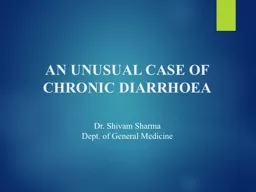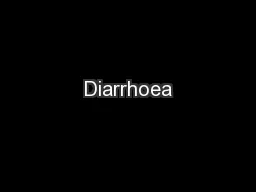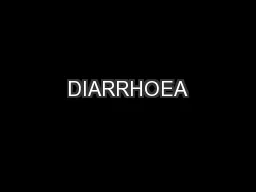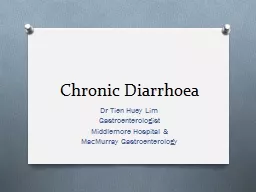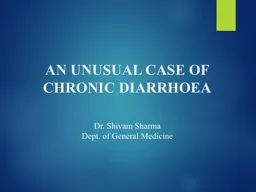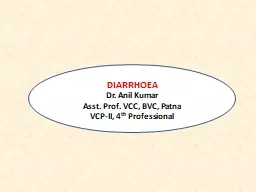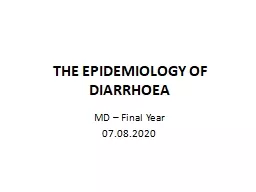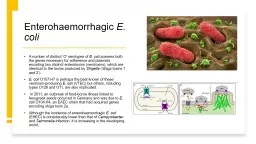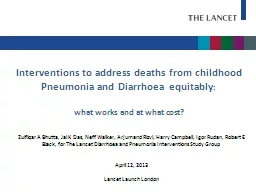PPT-AN UNUSUAL CASE OF CHRONIC DIARRHOEA
Author : lindy-dunigan | Published Date : 2019-12-11
AN UNUSUAL CASE OF CHRONIC DIARRHOEA Dr Shivam Sharma Dept of General Medicine A 28 year old male presented with Diarrhoea and weight loss of 5 Kg over a period
Presentation Embed Code
Download Presentation
Download Presentation The PPT/PDF document "AN UNUSUAL CASE OF CHRONIC DIARRHOEA" is the property of its rightful owner. Permission is granted to download and print the materials on this website for personal, non-commercial use only, and to display it on your personal computer provided you do not modify the materials and that you retain all copyright notices contained in the materials. By downloading content from our website, you accept the terms of this agreement.
AN UNUSUAL CASE OF CHRONIC DIARRHOEA: Transcript
Download Rules Of Document
"AN UNUSUAL CASE OF CHRONIC DIARRHOEA"The content belongs to its owner. You may download and print it for personal use, without modification, and keep all copyright notices. By downloading, you agree to these terms.
Related Documents

